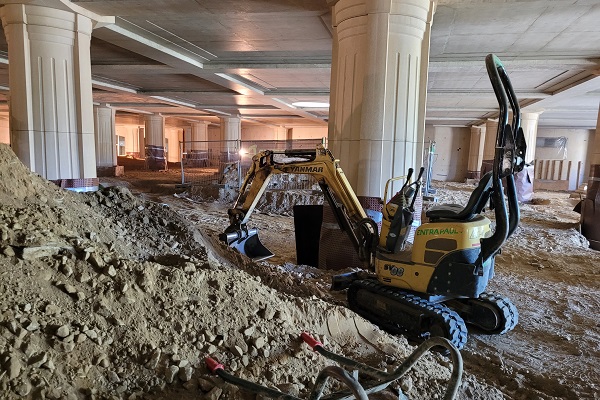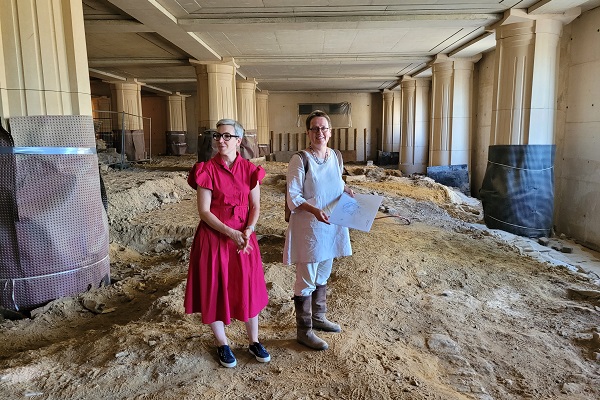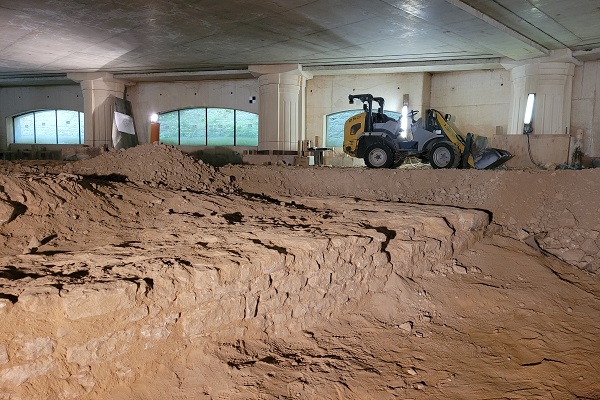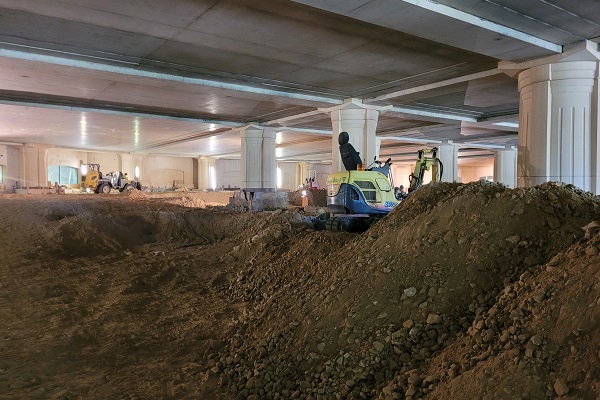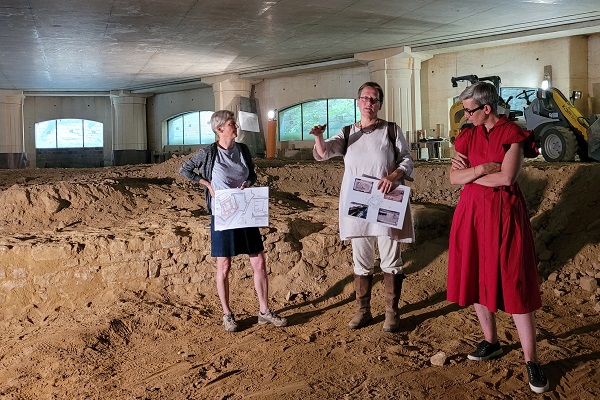 L-R: Elisabeth Teisen, architect; Christiane Bis-Worch, chargée d'études at INRA; Sam Tanson, Luxembourg's Minister of Culture;
Credit: Jazmin Campbell
L-R: Elisabeth Teisen, architect; Christiane Bis-Worch, chargée d'études at INRA; Sam Tanson, Luxembourg's Minister of Culture;
Credit: Jazmin Campbell
On Tuesday 19 July 2022, members of the Luxembourg press embarked on a tour of the remains of the Saint-Esprit archaeological crypt in Luxembourg-Ville, at the invitation of the Minister of Culture, Sam Tanson.
Located under the Cité Judiciaire, Luxembourg City's justice quarter, the crypt offered respite from the 35°C heat on Tuesday afternoon. The aim of this press visit was for the Culture Minister, along with representatives of the national institute for architectural heritage (Institut national pour le patrimoine architectural - INPA) and the national institute for archaeological research (Institut national de recherches archéologiques - INRA), to present the current state of works to clear the archaeological remains of the old Holy Ghost Citadel (Citadelle du Saint-Esprit) and the overall project for the future development and opening of the site to the public (scheduled for 2024).
"Luxembourg is full of archaeological treasures", commented Minister Tanson. "We have one under our feet. During the construction of the Cité Judiciaire, a promise was made to UNESCO to make these vestiges of the past accessible to the public. By aiming to complete the work by 2024, we intend to keep this promise".
The first surveys were carried out on the site back in 1996, during which archaeologists discovered important remains of the former convent of the Clarisses. Founded in 1234 on the initiative of Countess Ermesinde of Luxembourg, the site was adapted in 1685 by Sébastien Le Prestre de Vauban and was used for military purposes until 1966. Excavations began in 2000. In order to protect the site during construction of the Cité Judiciare, it was covered with a layer of sand (0.5 to 1.5 metres deep) in 2002. Work on the site was then paused until after the inauguration of the Cité Judiciare in 2008.
As Minister Tanson, together with Christiane Bis-Worch, chargée d'études at INRA, and architect Elisabeth Teisen, explained during the visit, the site is part of a future tourism project which will focus on the themes of the architecture of and daily life in the convent, as well as religious life in the Middle Ages. About 220 metres of suspended walkways will be installed above the crypt, the surface of which is about 1000m2, to guide visitors through the archaeological remains without damaging them. The visitor route will follow the path that the nuns travelled daily, including their journey from the cloister to the convent church. The site will also show the social perspective of life in the Middle Ages. One important challenge will be to ensure that this route is fully accessible to all.
Since late May / early June 2022, Entrapaulus Construction SA has been carrying out earthworks to evacuate some 3000m3 of sand; once this is finished, archaeologists will proceed with the next round of excavations. At the same time, an educational component is being developed in collaboration with the architectural firm Teisen & Giesler (contractor: INPA). A European call for projects for the development of the scenography of the crypt will be launched some time this year.
During the visit, Christiane Bis-Worch lamented that some ruins, such as a staircase, had been damaged during previous works, not due to malice but due to people not paying attention at the time. Culture Minister Sam Tanson noted that valorisation of this archaeological heritage was ongoing. She added that the ultimate goal was not for archaeologists to excavate for the sake of excavating, but rather only to do so if needed.
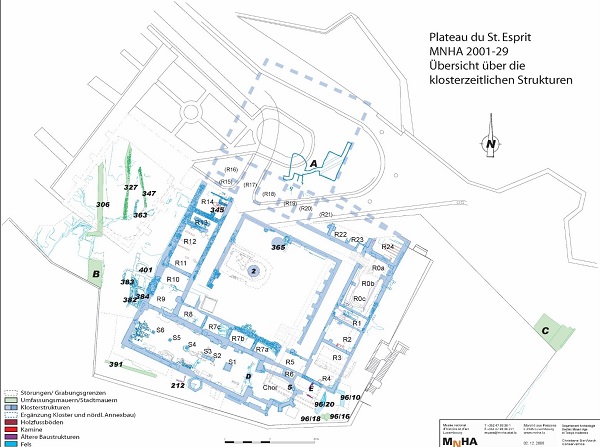
Map of the Saint-Esprit archaeological ruins. Credit: MNHA / MCULT

